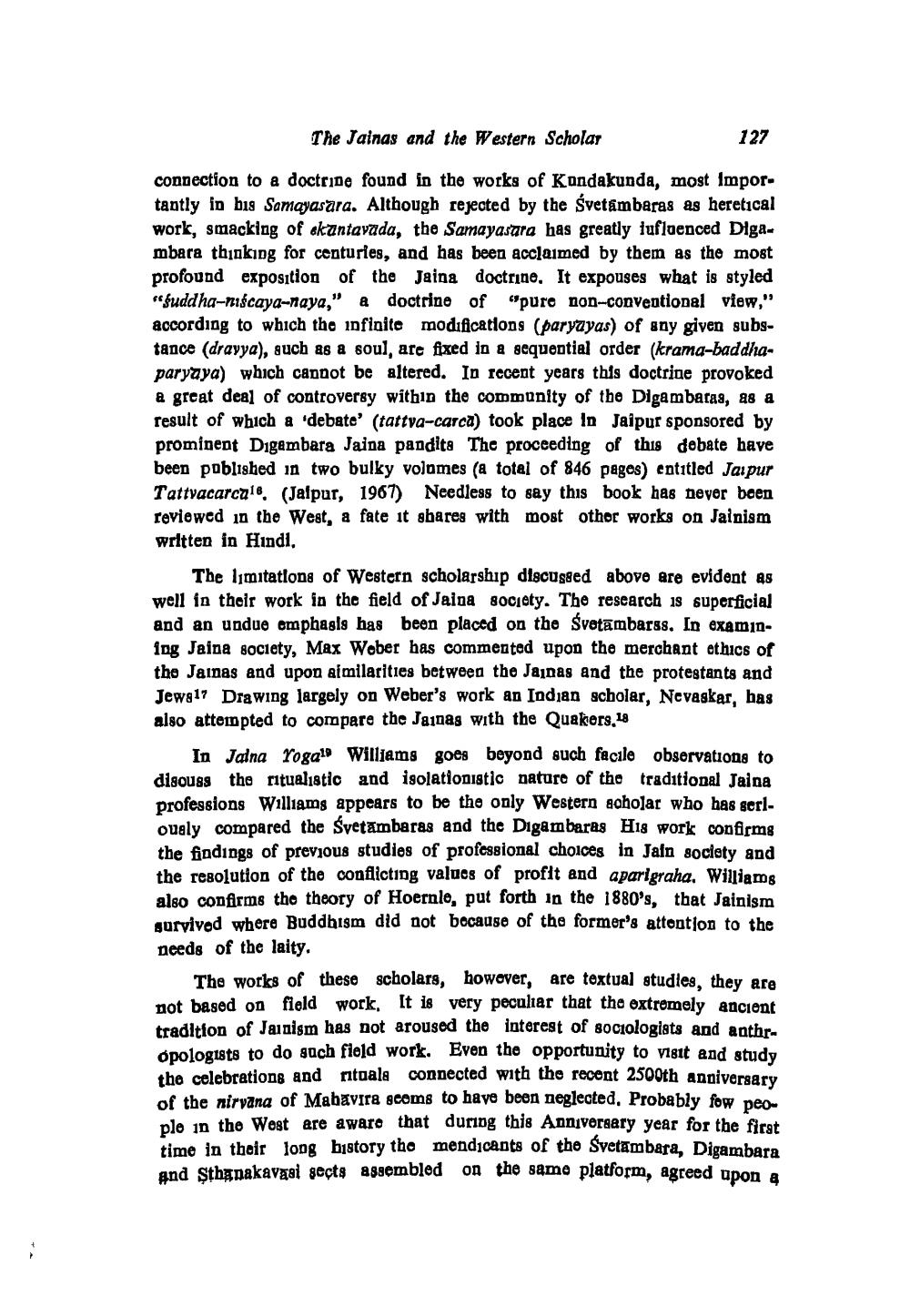________________
The Jainas and the Western Scholar
127
connection to a doctrine found in the works of Kondakunda, most importantly in bis Samayasara. Although rejected by the Svetambaras as heretical work, smacking of skantavada, the Samayasara has greatly iufluenced Digambara thinking for centuries, and has been acclaimed by them as the most profound exposition of the Jaina doctrine. It expouses what is styled "Suddha-niscaya-aya," a doctrine of "pure non-conventional view," according to which the inflaite modifications (paryayas) of any given substance (drayya), quch as a soul, are fixed in a sequential order (krama-baddhaparyaya) which cannot be altered. In recent years this doctrine provoked a great deal of controversy within the community of the Digambaraa, 48 a result of which a 'debate' (tattva-carca) took place in Jaipur sponsored by prominent Digembara Jaina pandita The proceeding of this debate have been poblished in two bulky volumes (a total of 846 pages) entitled Jaipur Tattvacarcal. (Jalpur, 1967) Needless to say this book has never been reviewed in the West, a fate it shares with most other works on Jainism written in Hindi,
The limitations of Western scholarship discussed above are evident as well in their work in the field of Jaina society. The research is superficial and an undue emphasis has been placed on the Svetambaris. In examining Jaina society, MAX Wober has commented upon the merchant ethics of the Jainas and upon similarities between the Jainas and the protestants and Jewg17 Drawing largely on Weber's work an Indian scholar, Nevaskar, bas also attempted to compare the Jainas with the Quakers,18
In Jalna rogal Williams goes beyond such facile observations to digouss the ritualistic and isolationistic nature of the traditional Jaina professions Williams appears to be the only Western scholar who has serlously compared the Svetambaras and the Digambaras His work confirmg the findings of previous studies of professional choices in Jain society and the resolution of the conflicting values of profit and aparigraha. Williams also confirms the theory of Hoernle, put forth in the 1880's, that Jainism aprvived where Buddhism did not because of the former's attention to the needs of the laity.
The works of these scholars, howover, are textual studies, they are not based on field work. It is very peculiar that the extremely ancient tradition of Jainism has not aroused the interest of sociologiats and anthrsmologists to do such field work. Even the opportunity to visit and study the celebrations and rituals connected with the recent 2500th Anniversary of the nirvana of Mahavira scoms to have been neglected, Probably fow peon ple in the West are aware that during this Anniversary year for the first time in their long history the mendicants of the Svetambara Diamhar. and Sthanakavaal gects aggembled on the same platform, agreed upon a




